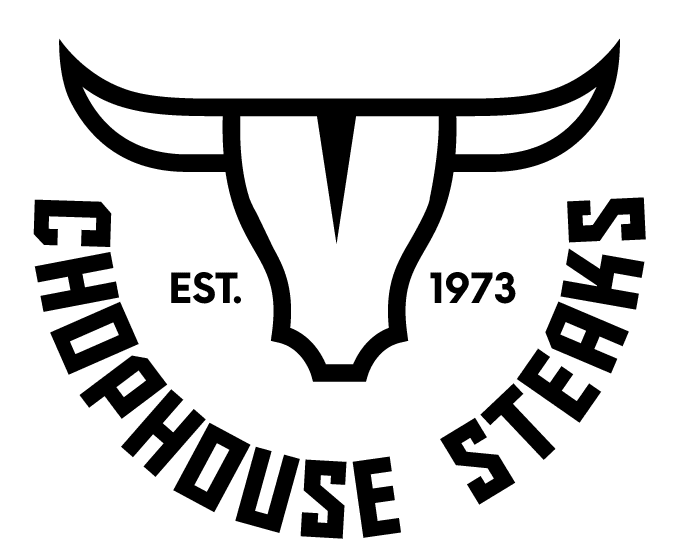Once upon a time, in a world before utensils and plates, two cavemen sat around a fire roasting a T-bone steak. As they eagerly anticipated the juicy meat, the caveman named Barney picked up the T-bone by its bone and took a bite. He savored the flavor but noticed that the tenderloin was missing.
He asked his friend, Fred, “Where did the other piece of meat go?“
Fred replied with a full mouth, “I ate it with my hands, just like a real caveman!“
And with that, the two friends laughed and continued to enjoy their T-bone steak, stone-age style.
What is T-bone Steak?
This cut of beef is named after its prehistoric T-shaped bone which divides two cuts of meat:
- The New York strip (US) or sirloin (British Commonwealth) and
- the tenderloin (US) or fillet (British).
As a Commonwealth country with America as our neighbour, we Canadians mix it up and refer to the parts of a T-bone as sirloin and tenderloin!
The sirloin is cut from the longissimus dorsi muscle*, and the tenderloin from the psoas major**.
Did you know?
*The largest muscle of the back and one of the main causes of back pain in humans.
**A muscle deep in the body that causes pain when you have been sitting (at a computer) for a long time.
Porterhouse Steaks and T-bones are Cut From the Short Loin
While every porterhouse steak is a T-bone, not every T-bone steak is a porterhouse. Both are cut from the short loin, but the difference between the two lies in their thickness and make-up:
A porterhouse must be at least 1.25 inches thick, while a T-bone only needs to be 0.5 inches thick.
If you can’t decide whether to choose between a tender but less tasty fillet or a tasty but less tender strip steak, these cuts combine them both. The porterhouse has a larger portion of fillet compared to a regular T-bone.
Did you know?
The origin of the word “steak” can be traced back to the Saxons, whose term for the dish was “stelk,” meaning “meat on a stick.”
It has a Large Sirloin Size Which Makes it Cook Slower
If you are planning on cooking T-bone steak, pour yourself a glass of good red#, as it takes a little longer.
The sirloin cut in a T-bone steak is larger and has a layer of fat that acts as insulation, making it cook more slowly than the tenderloin. To address this disparity in cooking times, select a T-bone with a large and thick tenderloin to promote even cooking.
Alternatively, angle the steak while cooking, positioning the tenderloin away from the hottest part of the grill. This will help slow down the cooking of the tenderloin while ensuring that the sirloin cooks to perfection.
Did you know?
#A full-bodied red, such as a Syrah with notes of black pepper and mulberry, partners perfectly with T-bone.
It Has Less Than 200 Calories
Red meat is a rich source of protein, essential vitamins, and minerals such as iron, zinc, and B-vitamins, and contains healthy fats.
What’s more, T-bone steak contains only 180 calories.
Did you know?
The iron in red meat is heme iron, which is easily absorbed by the body.
T-bone Can be Cooked or Grilled
When you are ready for a culinary treat, you have two choices on how to cook T-bone.
1. The epitome of BBQs, T-bones are ideal for grilling:
- The two distinct cuts of steak on a T-bone will react differently on the grill. For the best flavor, buy a T-bone with ample marbling on the sirloin side for a beefier taste.
- Rub lightly with olive oil, salt, and pepper.
- Grill hot and fast.
- Use an instant-read thermometer and measure a section of the meat away from the bone.
2. The best way to cook T-bone steak indoors is using the stovetop-to-oven method:
- Sear it quickly in a hot cast iron skillet.
- Transfer to a preheated 425o F oven until it reaches the desired level of doneness.
Did you know?
125oF for rare; 130 – 135oF for medium rare.
Chophouse Steaks T-bone Steaks
Our butchers at Chophouse Steaks have spent almost 50 years sourcing premium beef and skillfully carving it to perfection. For a memorable dining experience, order top-quality steaks online and enjoy them at home.
Did you know?
We specialise in Japanese and Brant Lake Wagyu beef.

